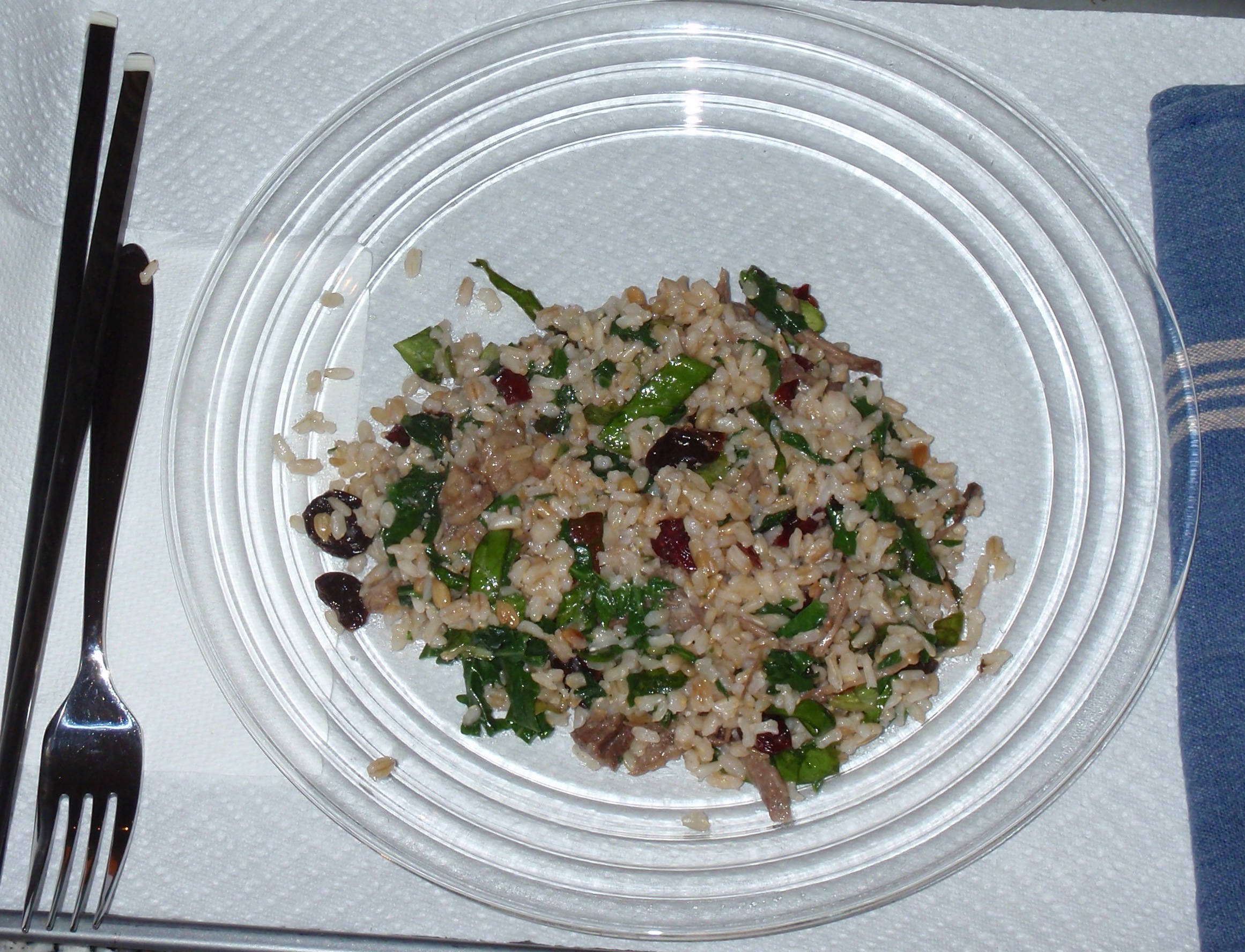When we lived in Spain for two years, we had a “favorite” Chinese restaurant that we frequented while living in Velez-Malaga, Spain. Nie Xun Zhie (locally called Xi Xie) was a very authentic Chinese restaurant, where they all spoke… you got it… Spanish.. This as close as I can recreate to my favorite dish that I got every time we went there.
INGREDIENTS
- Whole grain rice (not quick cook)
- 1 carrot (julienne strips then diced – aka riced)
MEAT TOPPING - 1 thin Pork cutlet
- 1/2 onion (thinly sliced)
- 1 stalk celery (diced)
- 5 small hot chili peppers (minced)
- 1 clove garlic (diced)
- EVOO
- diced scallion
SAUCE - 1 tsp (to taste) Siracha
- 2 TBL Soy sauce
- 1 TBL tomato paste
- 1 TBL Corn starch
- 2 TBL Rice Wine Vinegar
- 1 tsp Sugar
- zest and juice from one lime
STEP BY STEP
- Start rice cooking. This will take about 30 minutes. Stir rice at 15 minutes, then continue with preparation.
- 15 minutes from completion of rice, heat oil in saute pan
- Sweat onions over low heat
- When the onions START to become translucent, add celery
- Stir to combine (30 seconds) then add chili peppers
- Stir to combine, then add garlic
- Cook 1 more minute, then remove from heat
Once you become familiar with this recipe, you can start Step 8 at the same time as Step 2
- Heat cast iron skillet to high heat
- Sear pork over high heat in lightly oiled pan just until edges start to curl
- Flip and cook about half the time the other side cooked
- Remove from heat and place on cutting board to let juices redistribute for about 5 minutes.
- Cut pork into thin strips, then into small cubes, then mince a bit more
- Combine both onion mixture and pork into saute pan over LOW heat
- Put carrots into skillet pork was cooked in and put over medium heat
- Mix soy, corn starch and sugar in small bowl
- Mix in with pork mixture and stir until it starts to thicken
- Mix riced carrots into the rice, reserving some for garnish
- Server mixture over rice and top with carrot rice and scallions


